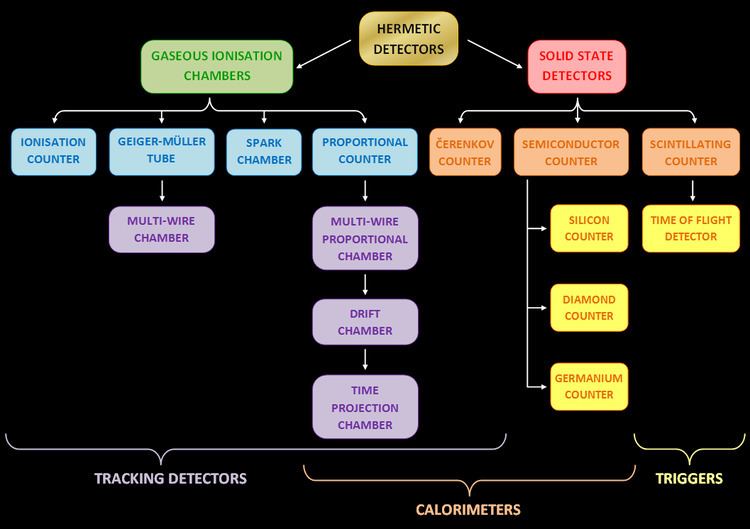 | ||
In experimental and applied particle physics, nuclear physics, and nuclear engineering, a particle detector, also known as a radiation detector, is a device used to detect, track, and/or identify ionising particles, such as those produced by nuclear decay, cosmic radiation, or reactions in a particle accelerator. Detectors can measure the particle energy and other attributes such as momentum, spin, charge, in addition to merely registering the presence of the particle.
Contents
Examples and types
Many of the detectors invented and used so far are ionization detectors (of which gaseous ionization detectors and semiconductor detectors are most typical) and scintillation detectors; but other, completely different principles have also been applied, like Čerenkov light and transition radiation.
Historical examples
Detectors for radiation protection
The following types of particle detector are widely used for radiation protection, and are commercially produced in large quantities for general use within the nuclear, medical and environmental fields.
Commonly used detectors for particle and nuclear physics
Modern detectors
Modern detectors in particle physics combine several of the above elements in layers much like an onion.
Research particle detectors
Detectors designed for modern accelerators are huge, both in size and in cost. The term counter is often used instead of detector when the detector counts the particles but does not resolve its energy or ionization. Particle detectors can also usually track ionizing radiation (high energy photons or even visible light). If their main purpose is radiation measurement, they are called radiation detectors, but as photons are also (massless) particles, the term particle detector is still correct.
